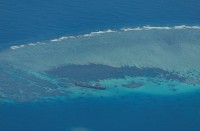PASIG CITY, May 30 – As the rainy season is about to start, Secretary Mel Senen S. Sarmiento of the Department of the Interior and Local Government (DILG) is calling on all local government units (LGUs) to carry out the disaster preparedness measures under Operation Listo.
According to the Philippine Atmospheric, Geophysical and Astronomical Services Administration (PAGASA), the current El Niño is already in its decaying stage and there is a possible rise of La Nina during the second half of 2016.
PAGASA particularly warned the provinces of Isabela, Quezon, Samar, Leyte, Surigao, Agusan and Bicol of the developing La Nina.
In a directive, Sarmiento urged all provincial governors, city and municipal mayors, and DILG regional directors to take precautionary measures in their respective areas of responsibility.
“LGUs are encouraged to convene their respective Local Disaster Risk Reduction Management Councils to prepare a La Nina Action Plan; closely coordinate with PAGASA for timely weather updates and with the DENR-Mines and Geosciences Bureau for adequate information on the threat of flooding and rainfall-induced landslides within the respective LGU,” said Sarmiento.
He also directed LGUs to regularly submit a status report to the DILG, through its Field and Regional Offices, on all La Nina related incidents, including planning,preparations and general assessments.
Operation Listo
Sarmiento also reminds LGUs to implement the early preparedness actions listed in the Operation Listo Manuals for hydro-meteorological hazards namely the (1) Checklist of Critical Preparations for Mayors, (2) Checklist of Early Preparations for Mayors, and (3) Checklist for Municipal Local Government Operations Officers, Chiefs of Police, and Fire Marshalls.
These manuals lay down disaster preparedness minimum standards before, during, and after a disaster.
There are four General Actions to be undertaken proactively by local chief executives to be able to carry out the functions during the critical period when an advisory or alert is issued by PAGASA: (1) create the local Disaster Risk Reduction Management structures and systems to be mobilized; (2) institutionalize policies and plans; (3) build the competency of the created structures through various training; and (4) complement the competency by purchasing and preparing the needed hardware and supplies to equip the actions.
“As the Manuals say, these are done during ‘peace time’ or when no immediate threat of a disaster. Tamang paghahanda, tamang aksyon. This is what Operation Listo reminds everyone that we must be preemptive instead of reactive,” said Sarmiento.
Operation Listo is an advocacy program of the DILG which aims to strengthen disaster preparedness of LGUs using the whole-of-government approach. Its first component called Listong Pamahalaang Lokal was launched in 2014 which institutionalized local protocols for disaster preparedness, response and monitoring.
“The goal is always zero casualty. The effectiveness of implementing Operation Listo is evident when we had no casualty in places affected by Bagyong Chedeng in Regions 2 and 3 including Pampanga last year,” Sarmiento pointed out.
Listong Pamayanan and Listong Pamilyang Pilipino
Last month, President Benigno S. Aquino III led the DILG’s launching of two new components of Operation Listo: the Listong Pamayanan and Listong Pamilyang Pilipino.
Listong Pamayanan are a capacity development interventions that started from LGUs and to be cascaded to the community; and the Listong Pamilyang Pilipino focuses on the family and household level preparedness.
In Listong Pamilyang Pilipino, the DILG partners with the Department of Social Welfare and Development (DSWD) in distributing “Gabay at Mapa”, which is a family guide to action before, during and after a disaster. It requires families to make a household plan determining their evacuation routes, family meeting points, and safe places in their home.
Families are advised to prepare their e-Balde, or Emergency Balde, which contains essential items to be brought during evacuation, such as ready-to-eat food, three gallons of water, medicine, first-aid and hygiene kits, clothes, flashlights, and radios. (DILG)







